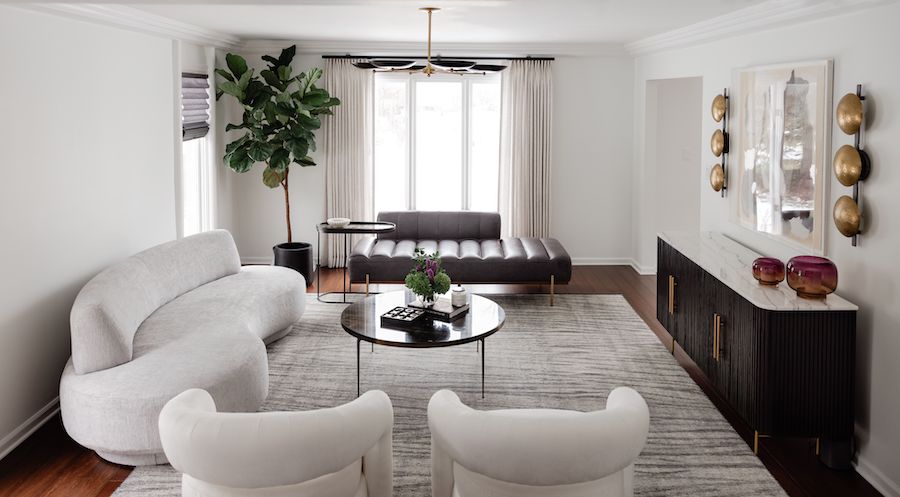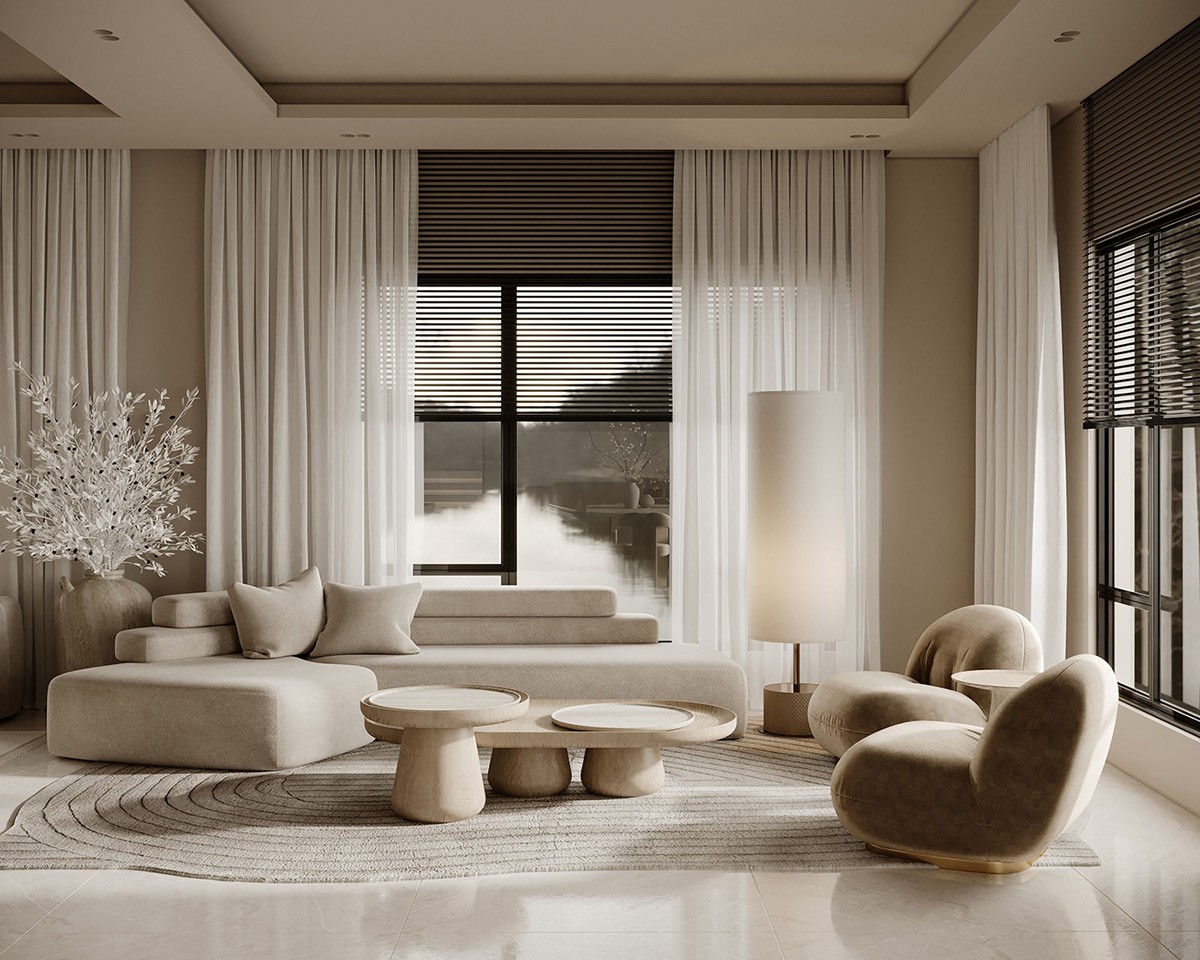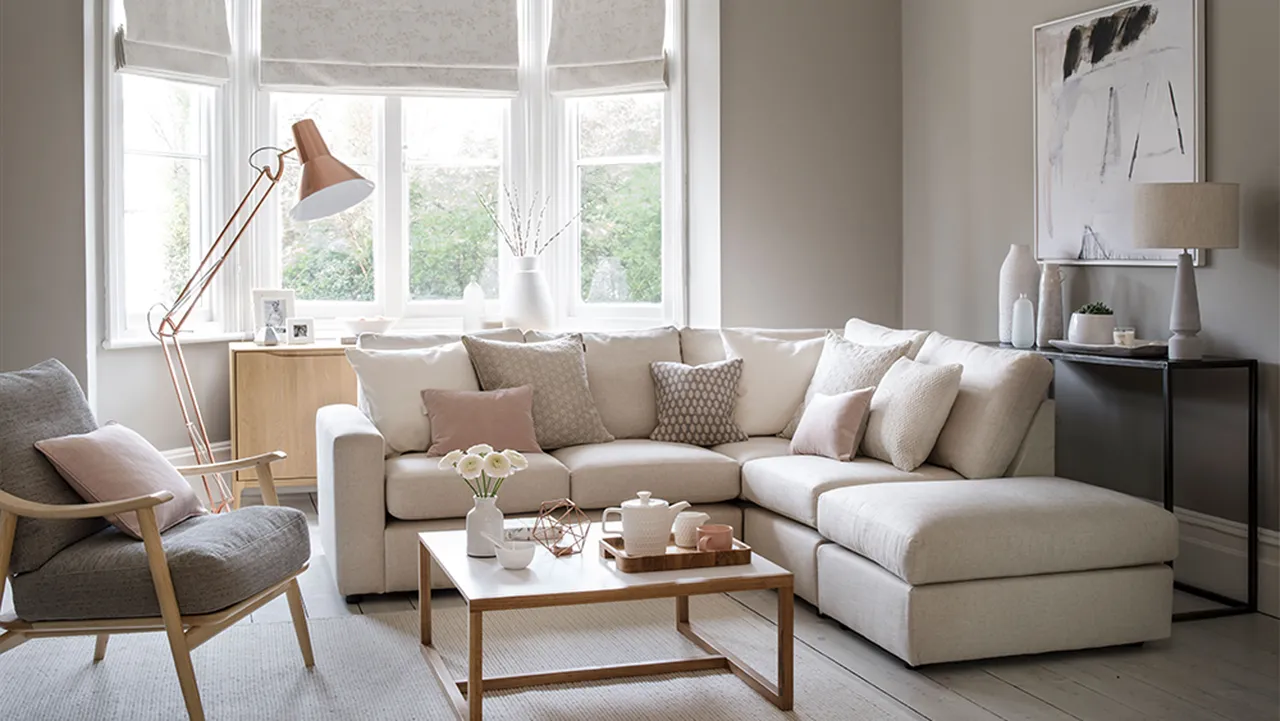Beige has emerged as a timeless color choice in interior design, offering a warm and neutral backdrop that complements a variety of decor styles. Its versatility makes it a preferable option for living spaces, as it brings a sense of calmness and understated elegance to a room. The color’s natural tones range from sandy fawn to a soft grey-tinted beige, providing a sophisticated palette that can easily be dressed up or down.

When designing a living space with beige, lighting plays a pivotal role in accentuating the color’s warmth and depth. Natural light can transform a beige room, highlighting its coziness during the day, while artificial lighting in the evenings can create an inviting and intimate atmosphere. Properly applied, a beige color scheme encourages a room’s architectural features and furnishings to take center stage, allowing residents and guests alike to appreciate the subtle nuances of the space.
The use of beige in a living area can also have a psychological impact, contributing to a serene and relaxing environment. It works well with layers of texture and patterns, preventing the space from appearing flat or monochromatic. Pairing beige with crisp whites can add a fresh feel, while combining it with dark hues, like chocolate brown or charcoal grey, can introduce a striking contrast that adds dimension and character to a room.
The Appeal of Beige in Living Spaces

Source: Living Hemma
Beige serves as the perfect backdrop in living spaces, providing a neutral canvas that complements diverse decor elements.
Psychology of Beige
Beige evokes a sense of calm and simplicity in a living space. It’s a color associated with minimalism and tranquility, making it an excellent choice for people seeking a peaceful and uncluttered home environment. The neutrality of beige offers versatility, allowing one to easily switch accessories or art without the need to repaint or undertake extensive redecoration.
Trends and Popularity
Over recent years, beige has seen a resurgence in popularity in home decoration. Interior designers and lifestyle magazines often highlight beige for its ability to harmonize with the shift towards natural materials and textures. According to market research, beige ranks as a top choice for living room paint colors due to its timelessness that appeals to a wide audience, making it a pragmatic option for homeowners and property developers alike.
Designing with Beige
In interior design, beige offers a palette of possibilities, serving as a versatile backdrop that enhances any space. The right application of beige can create a warm, inviting atmosphere that feels both sophisticated and grounded.
Choosing the Right Shade
Selecting the perfect shade of beige depends on the room’s natural light and the atmosphere one intends to invoke. Lighter beiges work well in smaller spaces or rooms with limited light, making them feel larger and more open. Darker shades add depth and warmth, suitable for areas where a sense of coziness is desired.
| Light Conditions | Recommended Beige Shades |
|---|---|
| Bright, Natural Light | Pale, Soft Beige |
| Low Light | Rich, Warm Beige |
| Mixed Lighting | Mid-Tone Beige |
Complementary Colors and Accents
Beige pairs effectively with a wide range of colors. To create a harmonious palette, consider blending beige with:
- Earthy tones: olive green, rust, and terracotta for a nature-inspired look.
- Blues and greys: for a cooler, more modern aesthetic.
- White or black: for stark contrast that makes a statement.
Accents like colorful throw pillows, artwork, or a vibrant area rug can add a pop of color against a beige backdrop.
Textures and Materials
Incorporating a variety of textures and materials can prevent a beige living space from appearing flat. Consider the following to bring dimension:
- Natural wood: adds warmth and texture, complementing beige tones.
- Metallic finishes: such as brass or chrome, insert a touch of elegance.
- Fabrics like linen and cotton: for soft, tactile variation.
Layering these elements through furniture, decorative objects, and textiles will enrich the space, showcasing the dynamic nature of beige.
Lighting and Beige Tones

Source: Wedezine Studio
Proper lighting is instrumental in bringing out the true essence of beige tones in a living space. Light dictates how these hues translate to the eye, affecting mood and the perception of space.
Natural Lighting Effects
Natural lighting can significantly alter the appearance of beige tones throughout the day. Morning light tends to be softer and can make beige colors appear warmer, enhancing a sense of coziness. In contrast, during midday, when the sun is at its peak, beige can look more neutral or even cooler, which could give a room a more spacious feeling. Below is a table showcasing how different times of day impact beige tones:
| Time of Day | Light Quality | Effect on Beige Tone |
|---|---|---|
| Morning | Soft/Warm | Cozier ambiance |
| Midday | Bright/Neutral | Spacious feeling |
| Evening | Dim/Warm | Intimate atmosphere |
Artificial Lighting Considerations
When utilizing artificial lighting, one must consider both the intensity and color temperature of light bulbs. For beige tones:
- Incandescent bulbs: They emit a warmer light, which can enhance the warmth of beige and create a welcoming atmosphere.
- LED bulbs: Available in a range of color temperatures, LEDs must be chosen carefully. A cooler temperature can make beige look more modern and crisp, while a warm temperature may add a sense of comfort.
Bulb Type & Effect
- Incandescent: Warm, cozy enhancement of beige
- Cool LED: Modern, crisp backdrop
- Warm LED: Soft, inviting glow
The brightness level is also paramount; too bright can wash out the color, while dim light may not adequately show the subtle nuances of different beige shades. Dimmable switches provide flexibility to adjust lighting to match the desired mood and time of day.
Furnishing in Beige

Source: Home Designing
Beige offers a versatile and warm palette for a living space, providing a canvas that allows furniture to become a focal point.
Selecting Furniture
When selecting furniture for a beige living space, one should focus on quality materials and timeless designs. A beige leather sofa or a set of linen armchairs can offer both comfort and durability. It’s crucial to consider the undertones of beige in the space; warmer beiges pair well with rich woods like mahogany, while cooler beiges go well with lighter woods such as birch or ash.
| Furniture Piece | Material | Suggested Color Tones |
|---|---|---|
| Sofa | Leather | Warm beige, Camel |
| Armchair | Linen, Velvet | Sand, Ivory |
| Coffee Table | Solid Wood | Dark Oak, Light Walnut |
| Bookshelf | Engineered Wood | Pine, Weathered Gray |
Mixing and Matching Pieces
Mixing and matching pieces within a beige living area can add depth and interest. Introduce textured fabrics like bouclé for throw pillows or an area rug to add contrast against smooth, beige surfaces. Pairing metallic accents such as a brass lamp or a bronze side table can also introduce a subtle sheen to the environment. When combining different pieces, maintaining a coherent color palette is key to ensuring the space feels cohesive.
- Textiles: Use rugs or throws in deeper or contrasting shades like taupe or chocolate to add layers of color.
- Wood Tones: Mix light and dark woods carefully to create balance and avoid clashes in undertones.
- Metal Finishes: Choose complementary metal accents; for example, brushed gold for warmer beiges and chrome for cooler tones.
Accessorizing and Decor

Source: Elle Decor
Beige living spaces benefit significantly from strategic accessorizing to add visual interest and personality. Thoughtful selection of decorative pieces and art can create a cohesive and inviting atmosphere.
Decorative Elements
One can introduce texture and contrast in a beige living area through various decorative elements. Soft furnishings like cushions or elegant throws can incorporate patterns or pops of color without overwhelming the space. For a tactile dimension, consider materials such as:
- Linen
- Velvet
- Wool
Incorporating plants brings life and a touch of vibrancy to a beige room. To keep the look refined and intentional, it is beneficial to utilize planters that complement the room’s aesthetic. Suitable options include:
| Material | Style |
|---|---|
| Ceramic | Minimalistic |
| Rattan | Bohemian |
| Metal | Modern |
Art and Wall Hangings
Art serves as a focal point in a beige living space, breaking the monochrome palette without clashing. When choosing art or wall hangings, consider works with:
- Subtle color accents that harmonize with the beige tones
- Textured surfaces like canvas or wood that introduce depth
For a polished and coherent look, it is advisable to select frames that coordinate with the existing decor. Frame materials that often work well in beige environments include:
- Light wood for a natural, airy feel
- Black or dark wood for a striking contrast
- Metallic finishes like gold or bronze that add a touch of luxury
By employing these elements carefully, one can curate a space that is both elegant and warmly inviting.
Maintenance of Beige Living Spaces

Source: Ideal Home
Maintaining a beige living space requires routine cleaning and occasional updates to the color scheme to keep the area looking fresh and inviting. It is important that these tasks are carried out with an understanding of the specific demands of the color.
Cleaning Tips
Beige fabrics and surfaces can hide dirt and stains, but regular cleaning is crucial to prevent buildup. For upholstered furniture, vacuuming should be done weekly using an upholstery attachment. In case of spills, one should blot immediately with a clean, dry cloth, followed by a damp cloth if necessary, and then dry thoroughly. For walls and hard surfaces, a microfiber cloth gently dampened with water and a mild detergent works effectively.
- Carpets and Rugs: Utilize a suitable carpet cleaner on stains, following product instructions. Regular steam cleaning is recommended every 12 to 18 months.
- Hard Floors: Sweep daily, and mop using a mixture of mild detergent with warm water on a bi-weekly basis.
- Walls: Dust lightly with a soft cloth regularly, and wash with soapy water yearly, or as needed for spot cleaning.
Refreshing the Palette
A beige living space may require a touch-up or a change in accessories to revitalize its color palette. One should consider the following:
- Repainting: Every few years, walls may need a fresh coat of paint to cover marks and scuffs. Select a high-quality, washable paint in a beige tone that coordinates with the existing decor.
- Accent Pieces: Swap out throw pillows, curtains, or area rugs to introduce new textures and complementary colors.
- Lighting: Adjust the quality of lighting to highlight the warmth of beige. Warm white bulbs can enhance the coziness of the space.
